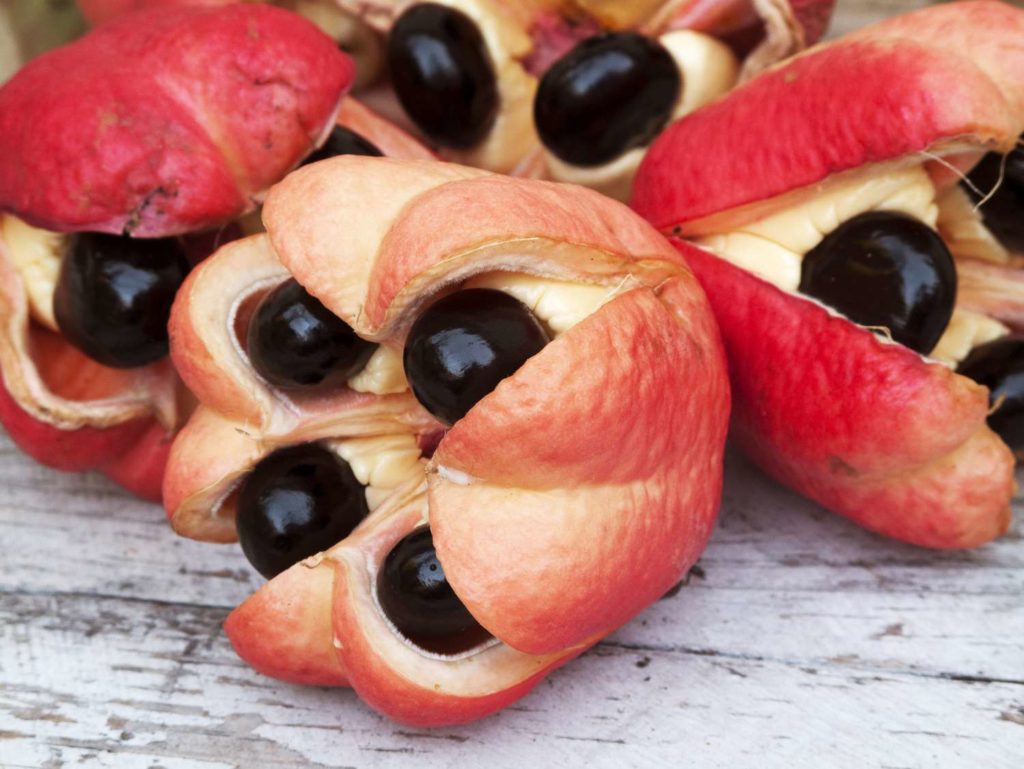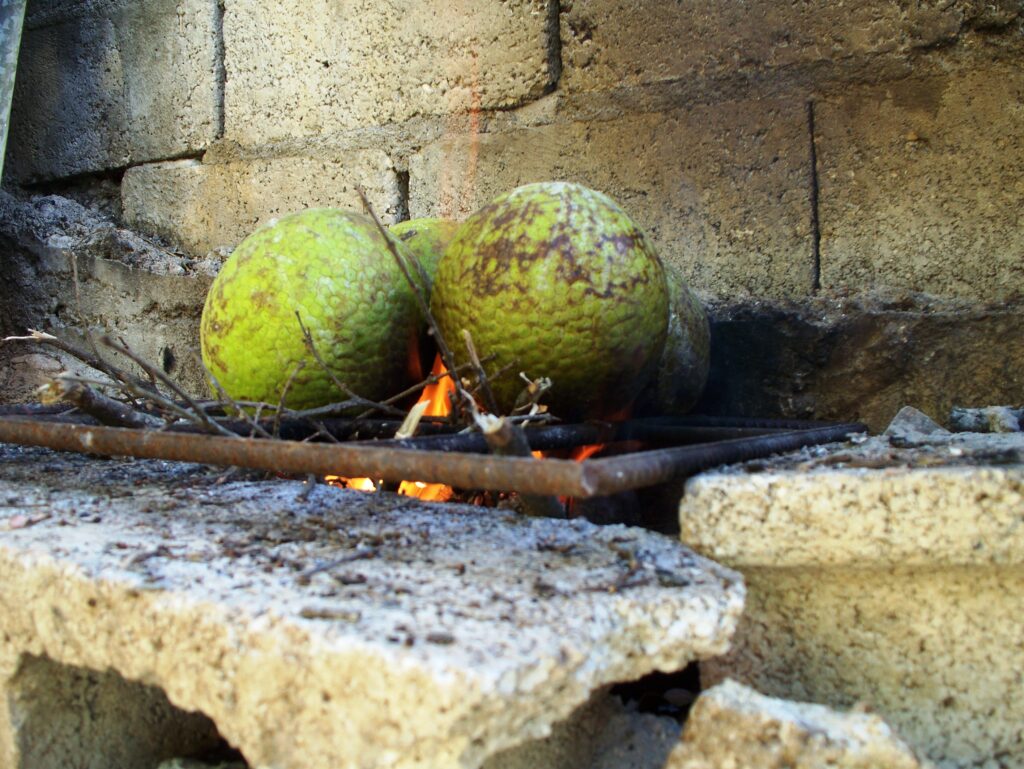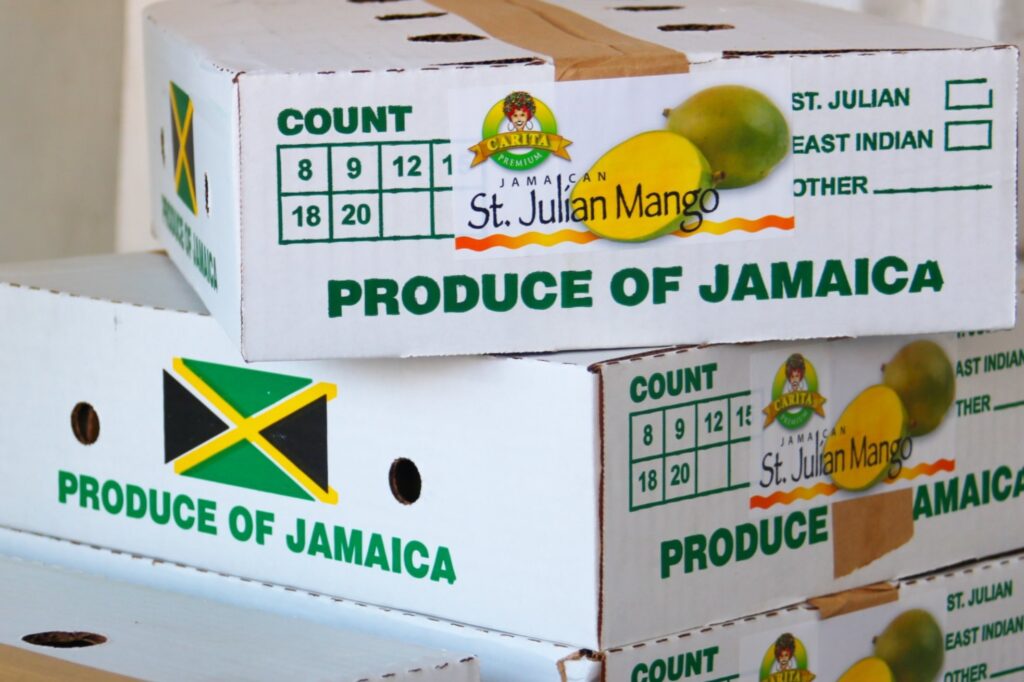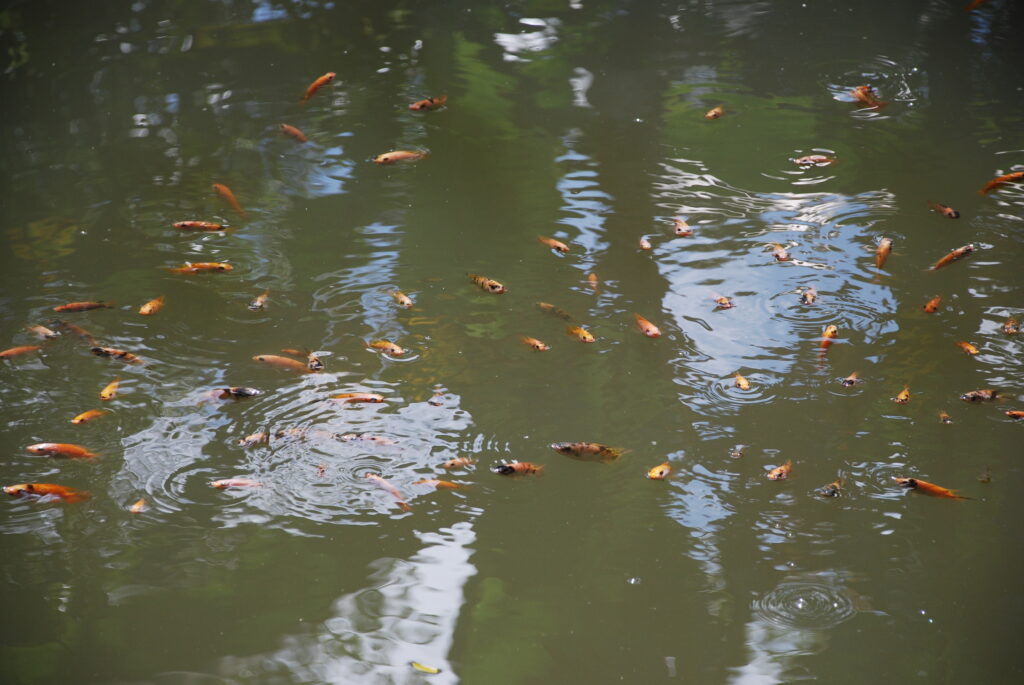

The Ministry of Agriculture hosted a re-launch of the New Face of Food on Friday (August 4) at the AC Marriott Hotel in New Kingston.
The aim is to enhance food security in alignment with both local and regional targets and commitments.
Below reads Minister of Agriculture Floyd Green’s full address:
“Today marks the first in what will be a series of continuous engagements as we join together to craft Jamaica’s New Face of Food.
We are all acutely aware that with the challenges facing food systems globally Jamaica must adapt, transform and evolve, Agriculture and Fisheries, it’s own food system to ensure that it can feed itself, that the brave and resilient entrepreneurs are maximising their profit, that we are using technology to treat with the climate crisis and that we are ensuring that the significant world demand for food from Jamaica is fulfilled. This is the new FACE of food with four fundamental pillars around food security, agribusiness development, climate smart technologies and export expansion.
Through the strategic expansion and development of robust value chains, we aim to not only reduce food waste but also empower our farmers and fishers, providing them with the tools and knowledge they need to transform their practices in alignment with green and climate-resilient methodologies.
Today, I will seek to outline a number of our priority/flagship programs for production across agriculture and fisheries. I will not delve into some of the ecosystem support such as our drive for storage, irrigation and protected agriculture, these will form the basis of other engagements.
Flagship programmes:
The New FACE of Food introduces flagship programmes centred around key crops like yam, breadfruit, sweet potato, ackee, mango, and the nurturing of small ruminants and aquaculture. These programmes stand as symbols of our commitment to enhancing food security, and considerable emphasis will be placed on expanding our exports, aiming to boost foreign exchange earnings and extend our influence in the global economic landscape.
Yam

Yam’s inclusion as a central component of the flagship programme ties into two of our central pillars, that of food security and export expansion. Over the last decade, yam has not only secured its position as the nation’s top non-traditional export crop but has also shown a remarkable and consistent upward trend in both its export volume and value.
In 2022, Jamaica’s total yam production surged to an impressive 207,500 tonnes, signifying the country’s capacity to cultivate this staple crop on a substantial scale. Out of this vast production, 14,500 tonnes were exclusively designated for export. This export orientation has also established yam as a key player in strengthening Jamaica’s economic ties with major global markets, particularly the US, UK, and Canada, which stand as the primary destinations for this prized Jamaican produce.
Yam varieties and identified production areas:
Two prominent yam varieties, yellow and sweet yam, are central to this initiative. Our focus regions for yam production are St. Ann, Clarendon, Trelawny (including Clarks Town and Jackson Town), Manchester, St. Thomas, and St. Elizabeth.
Strategies
To achieve these targets, we have devised strategic approaches:
In Strategy 1, we will identify exporters with potential for growth and facilitate more formal supply arrangements with groups of farmers who will work directly with these exporters.
Our second strategic intervention will see the ministry implementing incentive programs focusing on support for nutrition and crop care, as well as the provision of high-quality planting materials.
Under Strategy 3, we will employ trellising techniques on level terrains, such as Amity Hall. We will also introduce enhanced mini-sett cultivation methods and incorporate mechanised reaping practices..
Sweet potato

Performance and Marketability
With a yearly production of approximately 60,000 tonnes and an export volume of 1,500 tonnes to key markets, such as Canada, the United Kingdom, and Cayman Islands, sweet potato holds significant economic potential.
Its marketability and versatile value-added product possibilities align seamlessly with the new FACE of Food’s goals of enhancing food security, promoting agribusiness, and expanding exports. Within this framework, sweet potato emerges as a versatile contender that can be marketed not just as a crop, but as a Superfood. It offers a range of attributes that make it an enticing choice:
1. It can be positioned as a health-conscious alternative to rice.
2. With its low glycemic content, it proves to be an ideal dietary inclusion for diabetics.
3. The potential for value-added products, such as wedges, flour, cereal, juices, cosmetics, and even food coloring, presents ample avenues for innovation and growth.
Targets, varieties and production areas
In terms of our targets, we aim to attain a production threshold of 75,000 tonnes, of which we aspire to export 2,500 tonnes over the next three years.
Several distinctive sweet potato varieties, including yellow belly, Clarendon, and uplifter, have been identified as integral to our strategy. These varieties are cultivated across key production regions like St. Mary, particularly New Pen, St. Ann, making use of mined out lands, Clarendon, focusing on Ebony Park Agro- Park, Trelawny and St. Elizabeth.
Strategies:
Strategy 1
Our first strategic intervention revolves around the engagement of select farmers and nursery operators. Their pivotal role lies in the production of clean slips – an essential foundation for high-quality yield.
Strategy 2:
Under the second strategy, we will seek to strengthen the arrangements between farmers and exporters by leading the formalisation of those engagements and providing specific incentive programme geared towards nutrition support/crop care.
Strategy 3:
This will involve direct outreach to our private sector partners to drive value added production focusing on items such as sweet potato flour, fries and wedges. Land will be made available for factory establishment and mother farm arrangements.
Ackee

Performance and Potential
Ackee trees hold the potential to thrive across all parishes in Jamaica, yet organised orchard cultivation primarily concentrates in St. Elizabeth and Clarendon. Presently, the number of organised orchards remains limited within the country, and therefore, our strategic focus is on establishing around 1,000 acres of ackee trees in the next three years, through a collaborative public-private partnership.
Ladies and gentlemen, Jamaica possesses a distinct competitive edge in the Ackee export market, an advantage that presents a lucrative avenue for exploration. In 2022, the nation’s exports of this crop were valued at US$25.2 million.
Cultivation landscape and securing future supply.
Simultaneously, our export endeavours are geared towards expansion, although the precise numerical goal remains under definition, emphasizing the strategic nature of our approach.
Identified production areas
Identified across several strategic regions, including St. Ann, Clarendon, Trelawny, Manchester, St. Thomas, and St. Elizabeth, ackee production areas have been thoughtfully pinpointed. This deliberate identification provides a robust foundation for comprehensive cultivation efforts.
Strategies:
Strategy 1:
Focused on orchard establishment and expansion, this strategy serves as the backbone for cultivating new Ackee production zones, enabling growth in both quantity and quality.
Strategy 2:
Here, the emphasis is on rehabilitating existing orchards, harnessing their potential for increased yield. An incentivisation programme will be directed towards vital practices such as pruning, nutrition support, and comprehensive crop care, ensuring a sustainable and thriving Ackee production landscape.
Breadfruit

Breadfruit emerges as a potent ally in the global struggle against hunger, with its inherent ease of cultivation and maintenance offering a tangible solution. Renowned as one of the world’s most prolific and versatile trees, the breadfruit tree thrives across diverse soil types and elevations, epitomising adaptability. Notably high yielding, its longevity ensures that an investor reaps benefits for decades to come.
Jamaica’s connection with breadfruit extends beyond its local allure, with noteworthy export potential. In 2021, the nation exported 1,537,382.21 kilograms of fresh breadfruit, valued at US$2.114 million. While 2022 data indicated a temporary decline in exports, the local market proved resilient, absorbing a substantial 93.85 per cent of fresh and agro-processed breadfruit.
Identified Production Areas:
Encompassing regions such as Portland, St. Mary, St. Catherine, Hanover, St. Thomas, Westmoreland, and St. James, these areas have been earmarked as fertile grounds for robust breadfruit production.
Strategies:
Strategy 1
By creating new orchards and expanding existing ones, we are paving the way for both increased yield and lasting sustainability.
Strategy 2
This strategy revolves around the rehabilitation of existing breadfruit orchards, ensuring that their potential is maximized. An incentivization program will be tailored to encourage critical practices like pruning, while also offering comprehensive nutrition support and crop care.
Mango

The Mango Agro Park, situated in Toll Gate, Clarendon, was officially launched in 2022, making significant strides towards amplifying orchard-type agricultural developments in Jamaica. Spanning an expansive landscape of approximately 1000 acres, this Agro Park stands as a testament to the burgeoning appetite among investors for such endeavors. Their rapid response underscores the inherent demand for strategic agricultural platforms. Under the New FACE of Food Initiative, we are making more lands available for investment in mango orchards.
Additionally, in the global export arena, the United States, Canada, and the UK emerge as the primary markets, showcasing substantial demand for Jamaican mangoes. While the mainstay varieties remain East Indian and St. Julian, there’s also a discernible interest in Common, Black, Haden, and Chin Graham varieties.
Varieties and Identified Production Areas
The strategic spotlight falls on the East Indian and St. Julian varieties, each contributing their unique attributes to our comprehensive objectives. Our strategic focus has pinpointed several pivotal regions that will serve as the backbone of our mango cultivation efforts. St. Elizabeth, St. Catherine, St. Thomas, and Clarendon, each recognized for their agricultural prowess, form an interwoven network of strategic production hubs. It is within these regions that our vision of enhanced production and export expansion takes root and flourishes.
Strategies
Strategy 1
At its core, this strategy champions both the establishment and expansion of mango orchards, amplifying the scope and output of mango cultivation across Jamaica.
Strategy 2:
This strategy prioritizes knowledge transfer, particularly through Orchard Management training provided to farmers and exporters. To bolster optimal yield and quality, incentives will be tailored towards nutrition support and comprehensive crop care. Additionally our Plant Quarantine team and extension services through Rada will redouble their efforts at managing the fruit fly challenge.
Exports
Last year, we shipped a total of 633,220 kilograms [valued at] US$1,589,085.00 to the UK, Canada and the USA.
In the initial quarter of this year, the mango export figures have demonstrated exceptional performance, particularly in the context of shipments to the United Kingdom and Canada. Notably, Jamaica spearheaded these exports by sending a total of 112,072 kilograms of mangoes to the UK, resulting in a substantial monetary yield of US$251,068.71. Simultaneously, the Canadian market received 195,408 kilograms of mangoes, contributing significantly to a total revenue of US$475,662.34.
Let’s not forget our friends in the US and their demand for our mangoes. For the months of May and June 2023, we have done 16 shipments to the US of 49,337 KG totaling US$188,642.00 These statistics underscore Jamaica’s proficiency in mango cultivation and its prowess in international trade.
We are, however, just scratching the surface. This area presents tremendous potential for significant returns on investment.
Ladies and gentlemen, it is with unwavering commitment that we reaffirm our dedication to the advancement of our livestock programme. This focus stems from our recognition of the pivotal role that livestock plays in ensuring sustainable food production, bolstering our agricultural economy, and fostering self-sufficiency in the face of evolving global dynamics.
Small ruminants

Jamaica’s current scenario reveals a substantial reliance on imported meat, accounting for 60 to 70 percent of the nation’s consumption, and a staggering 90 percent for dairy products. A juxtaposition emerges as less than 15 percent of registered Jamaican farmers are actively engaged in livestock production. This glaring gap not only signals a significant deficit in domestic supply but also underscores the potential for strategic investments that can usher in a paradigm shift, enabling import substitution of meat and its derivatives.
Within the dynamic framework of the Face of Food Strategy, meticulously designed to address pivotal imperatives such as Food Security and Export Expansion, strategic pathways have been defined:
Investment opportunities
The investment opportunities within our livestock programme are poised to drive transformative change and sustainable growth. These opportunities include:
1. Importing live animals duty-free:
An incentive, this initiative aims to foster the inflow of live animals, reducing the cost of initial investment for farmers and paving the way for a more robust and self-reliant meat production landscape.
2. Fodder production:
Recognising the foundational role of fodder in livestock cultivation, this approach prioritises the establishment of dedicated fodder production systems, facilitating sustained and cost-effective livestock nourishment.
Production areas
Strategic regions such as St. Elizabeth, St. Catherine, St. Thomas, and Clarendon have been earmarked as vital production zones. These areas stand primed to play a pivotal role in our collective aim to invigorate domestic livestock production.
Strategy
At the core of our strategy lies a targeted incentive program, meticulously designed to empower farmers through free artificial insemination, assistance with infrastructure and equipment and; training in fodder production.
Through these concerted efforts, Jamaica sets forth on a transformative journey, recalibrating the trajectory of meat and dairy production. This strategic framework not only bolsters food security and export expansion but also unlocks a landscape of investment opportunities, positioning the nation at the forefront of sustainable agricultural advancement.
Aquaculture

Within the realm of food production, the aquaculture industry emerges as a beacon of rapid growth, asserting itself as one of the fastest-expanding sectors. As our global population surges, conventional farming practices prove unsustainable, fisheries face overexploitation, and climate change looms, a paradigm shift is imperative. Aquaculture, as a transformative food production system, rises to the occasion, offering a solution to these multifaceted challenges. However, the journey is not without its hurdles, as concerns loom about potential adverse effects on aquatic ecosystems, wild fish populations, and local communities. It is in this context that aquaculture investments unveil their dual potential: yielding healthy financial gains while also embracing vital environmental, social, and governance benefits.
Face of Food strategy
At the heart of the Face of Food Strategy lie two pillars [namely] food security and agribusiness development. These pivotal objectives underscore our commitment to not only nourishing our population but also fostering sustainable economic growth through innovative agribusiness models.
Identified production areas:
Strategic regions such as St. Elizabeth, St. Catherine, Clarendon, Westmoreland, and St. Mary are identified as pivotal hubs for aquaculture production. These locations serve as the bedrock of our endeavor to cultivate sustainable aquatic resources.
Strategy
Our strategic approach champions a carefully tailored incentive program, designed to empower aquaculture enthusiasts:
- By offering fingerlings for one pond acre, we not only encourage the cultivation of aquaculture but also facilitate a seamless entry point for those venturing into this transformative sector.
- Recognizing the learning curve inherent in aquaculture, this facet provides technical support and capacity-building resources to equip farmers with the necessary expertise.
Investment opportunity
For those seeking investment avenues, an exciting prospect arises in the form of establishing a cage system. The National Fisheries Authority will collaboratively identify suitable locations for these systems. To ensure the success of these ventures, comprehensive technical assistance will be provided. This opportunity presents a unique moment for a public-private partnership investment, with the potential for one investor to drive positive change in the aquaculture landscape.
As the aquaculture industry stands at the nexus of food security, sustainable development, and environmental stewardship, this strategic framework beckons all stakeholders to collaborate, innovating towards a future where nourishment and economic growth intertwine harmoniously.
Conclusion

Ladies and gentlemen, our visionary initiative, the Face of Food, comes to life through the dynamic involvement of Face of Food Ambassadors. These ambassadors embody the essence of our food strategy, weaving it into the fabric of establishments across various sectors. From distinguished hotels and progressive private enterprises to vibrant restaurants, pop-up culinary experiences, and engaging food festivals, the Face of Food designation embraces a diverse array of partners committed to championing our food revolution.
We extend a resounding call to potential investors, illuminating the value-added prospects within our agribusiness landscape. The allure of sweet potato, yam, ackee, and breadfruit extends beyond their culinary appeal. We beckon investors to explore the vast potential within the manufacturing sector – envision juices, cereals, spreads, and more that harness the essence of these staple crops.
Central to our progress are robust public-private partnerships. We present thoughtfully curated investment packages tailored to production, fostering a synergy that drives agricultural innovation. Our aspiration is clear: to achieve a remarkable 10-25 per cent increase in export across crops, culminating in a noteworthy 10 per cent boost in export earnings.
The remarkable journey of sweet potato is a testament to its potential as a wholesome and health-conscious alternative. As partners with the Ministry of Health and Wellness, we aspire to champion sweet potato as a naturally sweet solution, catering to the health-conscious and those grappling with diabetes. This collaborative approach symbolises the heart of our mission, creating a healthier and more prosperous future for all.
The New FACE of Food Initiative encapsulates the resilience of Jamaican agriculture, addressing challenges with determination and fostering a culture of innovation. As we embark on this journey, we envision a nation that not only feeds itself but thrives on the global stage, contributing to a sustainable and equitable world. The future we envision is one where food security is fortified, agribusiness is vibrant, and the environment is respected – a future where the vibrancy of our agriculture becomes a testament to our national spirit. Together, we embrace this initiative, united by the conviction that by reshaping our food systems, we are shaping a brighter, bountiful future for all.”







Comments